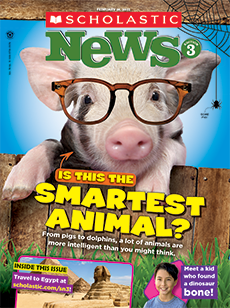1. Based on the article, what are some ways that satellites help us?
Sample response: Satellites help us by taking photos of our solar system and monitoring the weather.
(RI.3.2 Key Details)
2. Why do some scientists say that even small pieces of space junk can cause serious damage?
Scientists say that even small pieces of space junk can cause serious damage because the pieces of junk are traveling at superfast speeds. In the article, Charity Weeden of NASA says, “It’s like a really, really fast car that can bump into anything. You can’t control it.”
(RI.3.1 Text Evidence)
3. Describe two ways people are trying to tackle the problem of space waste.
One way people are trying to tackle the problem of space waste is by tracking trash as it travels around Earth. That way, they can move a satellite out of the way if a piece of junk gets too close. Another is by making robotic arms that can collect trash from space.
(RI.3.5 Cause/Effect)
